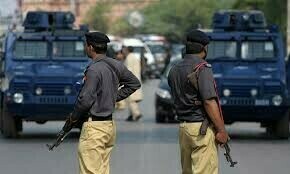IT’S very hard to find a single household of the Hazara community in Quetta that has not been victimised by targeted killing. It is a caged community, owing to their sect, in a state of captivity for the past 20 years. It is curious that a peace-loving, hardworking and progressive community has been subjected to systematic persecution.
Shia Hazaras are a Persian-speaking ethnicity of Mongolian decent who immigrated from Bamiyan, the Hazara region of central Afghanistan. Earlier, they had arrived in colonial India as labourers to feed their families; subsequently, they were forced to flee by the tyrant ruler Abdur Rahman Khan. Many Hazaras settled in Quetta, in close proximity to the cantonment area, owing to their employment in the army.
The wave of Hazara killings can be broadly categorised in three phases: first, with the radical Sunni propaganda that began during the regime of Gen Ziaul Haq to counter the Soviet invasion. This radicalism sowed the seed of bigotry and fanaticism. The first message calling the Shia community ‘kafir’ was pasted on the walls of Quetta in 1981. Back then, it was largely ignored by Quetta’s residents.
The second phase is when the killings began, when Hazaras were specifically and premeditatedly targeted for attack. In October 1999, the provincial education minister Sardar Nisar Ali Hazara was attacked along with his driver and bodyguard at point-blank range. Though the minister survived the attack, it marked the beginning of a targeted killing spree against Hazaras, particularly high-profile members of the community. Doctors, engineers, bankers, businessmen and state functionaries alike were selected, attacked and killed.
Those who have the means to emigrate leave, while those left behind live in a state of virtual incarceration.
The third phase is when the indiscriminate killings — ie the mass murder — of members of the Hazara community began. In June 2003, 12 Hazara police cadets were killed and nine injured when they were attacked en route to the police training institute by Sunni extremists. The next month, a terrorist attack on an imambargah during Friday prayers claimed the lives of around 50 Hazara men, with scores more injured.
To date, more than 650 Hazaras have lost their lives in attacks targeting their community.
The Hazara people are vulnerable to attack for several reasons. First, their distinctive features make them quite conspicuous and easily identifiable, even in a large gathering. Second, the two Hazara settlements in Quetta (namely Marriabad and Hazara Town) are approximately 13 kilometres apart, connected to each other by Spinny Road. They are usually targeted along this road when moving between the two areas. Third, the Shia zaireen, who pilgrimage to holy sites in Iran and Iraq, travel through the Taftan border 650km away from Quetta. The Hazara community hosts them. They travel in groups, with each group escorted by armed personnel of the law-enforcement agencies. The distance is long, the terrain unfriendly and the enemy disguised; they have, therefore, been frequently targeted along this route.
Law-enforcement agencies have stepped up their efforts, which have resulted in a sharp decline of incidents of target killing and terrorism. For instance, the police and Frontier Corps have set up permanent pickets in troubled areas, joint patrolling is routinely conducted to minimise the threat, and route protection is deployed for the safety of the zaireen. Besides this, a dedicated taskforce, the Eagle Force, has been established whereby armed police personnel are provided with heavy motorbikes and modern gadgetry. Their ingress into the narrow alleys adds to their swiftness and readiness to respond in the wake of any unforeseen incident.
The police, despite themselves being victims of terrorism and targeted killings themselves, have seen some substantial gains by apprehending proclaimed offenders and nabbing high-value targets with the aid of the Counter Terrorism Department. But there are certain inherent limitations; for instance, in all the incidents of targeted killings mentioned here, the conviction rate in the cases is only six per cent, which is very low. In such cases of targeted killing, private individuals are reluctant to come forward as complainants; cases are registered on the behalf of the state, which ultimately gives the benefit to the accused. Besides this, witnesses are not willing to provide testimony in a court of law, fearing the consequences of being subsequently targeted themselves.
Every Hazara household has a tale of pain and agony to tell, one which it relives each day. It has greatly affected their way of life. It has been observed that they themselves have become aggressive in response to the violence inflicted upon them. The attendance of Hazara children in schools is worryingly low. Members of their community are migrating to other countries; a large number of them have gone to Australia to find a decent way of life, where they can live without fear of being killed just because of their sect. They are getting rid of their valuable properties at nominal rates to expedite their exit, while those who have been left behind are virtually living in a state of incarceration, confined only to Marriabad and Hazara Town. To imagine life outside the premises of these housing colonies is unthinkable at the moment.
There are two approaches to deal with this problem: kinetic and non-kinetic. Kinetic measures deal with the operational aspect, ie ensuring that the culprits are arrested, investigated and sent up for trial. It’s a short-term solution in which we can only extinguish the visible inferno. Non-kinetic measures deal with the social upbringing of society, where emphasis is laid on human development, the provision of opportunities and judicious resource allocation. We have done much on the kinetic front, especially after the implementation of the National Action Plan and the establishment of the CTD, but the non-kinetic front — which can actually change the social paradigm — calls for more attention.
The writer is a police officer posted in Balochistan.
Published in Dawn, November 12th, 2018












































